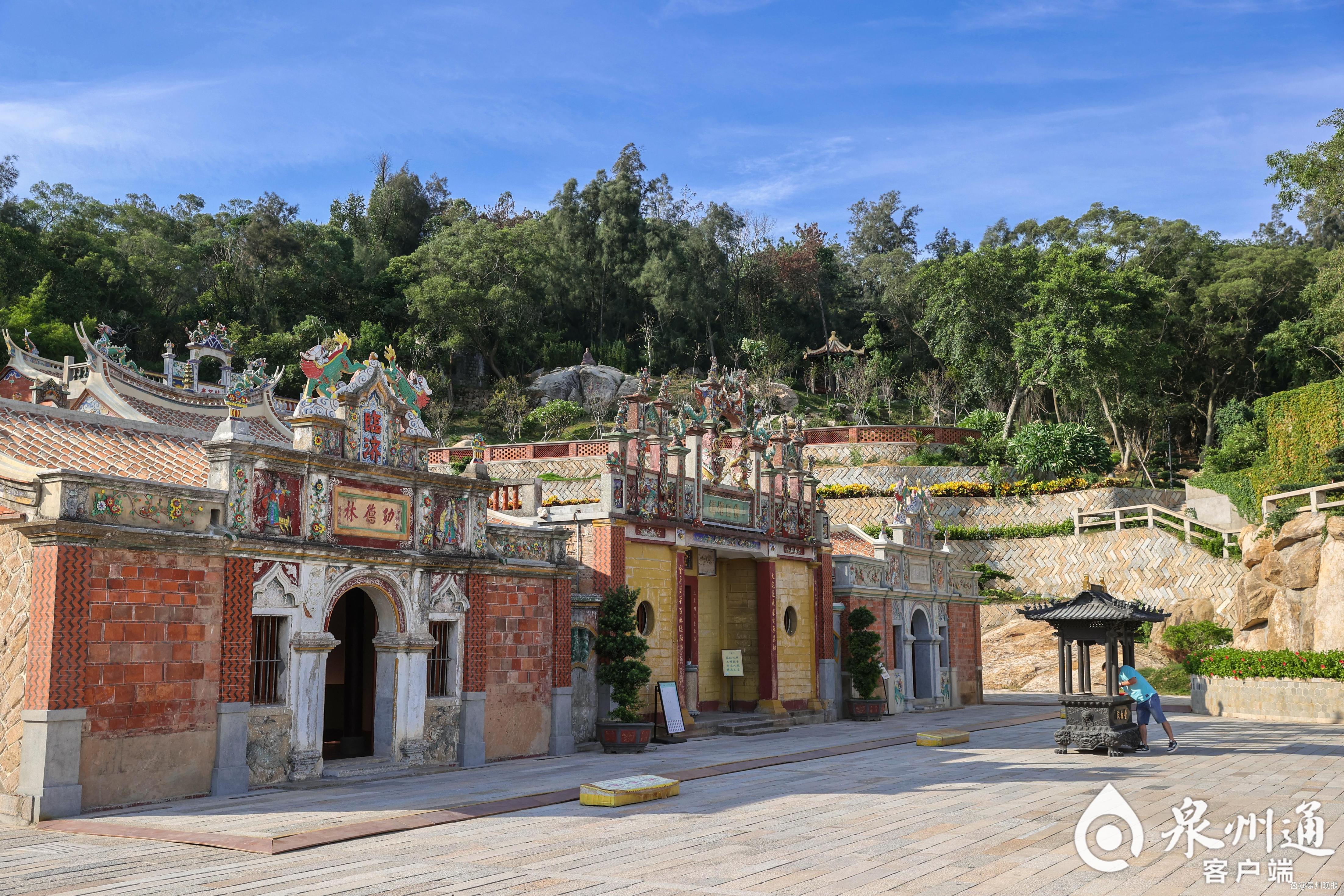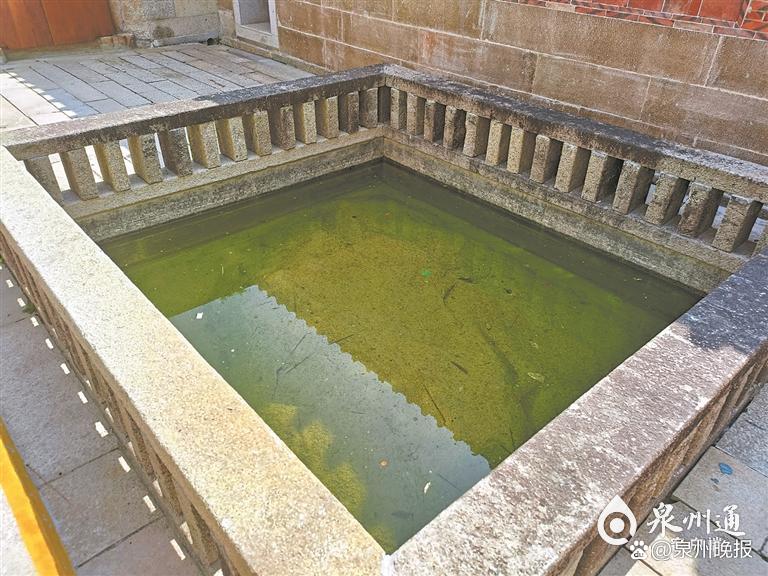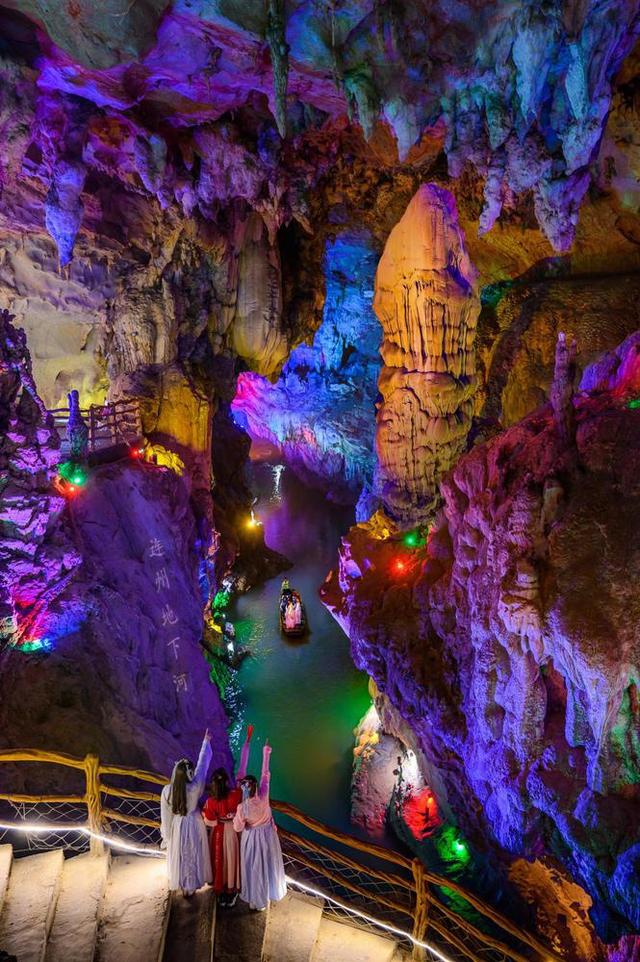Wen Lingzhi 丨 Listen to the "Dragon Yin Tiger" in the Golden Xiang Courtyard
Author:Quanzhou Evening News Time:2022.09.16

Golden Xiangyuan is a temple building full of Nanyang -style (Photo by Lin Jinfeng)
Quanzhou was the earlier place for Buddhism. In the ninth year of Western Jin Taikang (288 years), there was Yanfu Temple under the nine days near the nine days near Dong'an County (now Nan'an Fengzhou). To the Sui Dynasty, the temples of Longshan Temple, Yuantongyu, Lingbi Temple, Tianzhu Temple, Tianxiang Temple, Infant Temple, Qi Shi Temple (now Jinxiangyuan) and other temples have played a role in promoting the development of Quanzhou Buddhism. Among these temples, Jinxiangyuan is not the longest in history, the size is not the largest, and the reputation is not too loud, but from ancient times to the present, Shi Qizong, Wang Shipeng, Master Hongyi, Cai Senior, Lin Yanhe, Lin Sao, Zeng Yan, etc. Celebrities are rushing to it. So what is the collection of Jinxiangyuan and these historical celebrities? Let's go to find out today.
□ Quanzhou Evening News reporter Wu La Yunzhuang Jianping text/picture (except for the signature)
Millennium "empty orchid" still exists so far
Jinxiangyuan is located in the northeast of Lingxiu Mountain (ancient belonging to the ancient genus) in Lingxiu Town, Shishi City. The temple was built in the Sui Dynasty. Qing Daoguang's "Jinjiang County Chronicle · Volume 4 · Mountains and Chuan" contains: "Lingxiu Mountain, in the (Jinjiang) twenty -one capital, more than 50 miles from the south of the county city." "The grass is green in the landscape", this name is quite longing for free and free. It is called "Lingxiu", which is named because of the beautiful mountain scenery. In the Ming Dynasty, Huang Zhongzhao's "Eight Fujian Tongzhi · Volume Seven · Geography · Quanzhou Prefecture · Jinjiang County" said: "Lingxiufeng, nineteen capitals in the south of the government. Win. "

Porcelain pieces on the eaves are colorful and colorful
During the Sui and Tang dynasties, there was a sea under the mountains, and there was a small rock behind the Qi Shuma. The Qi Mosque was once called the tide. This rock has been reserved in the "Yingchao Pool" in the temple so far.

On the side door, there is a couplet written by Master Hongyi, "Everything comes with praise, and all sentient beings know comfort."

The "empty orchid" recorded in the temple can still be seen everywhere (Figures of Zongjing Plan)
Although this Lingxiu Mountain is extremely clever, the Qi Shuma (Golden Xiangyuan) is famous for its "empty orchid" with different fragrances. This orchid is born to the streams, mountains, and forests of Lingxiu Mountain. It has an elegant posture and fragrant smell. "Rong Qing Cai Family Genealogy" contains: "Lingxiu Mountain is a peak, there is a strange orchid, which is fragrant, called‘ empty orchid ’”. "Empty" refers to the empty valley orchid, and the "phase" refers to the birth of the heart. In the second year of Liang Kaiping (908), when the monks were silently built in the Mosque, the monks were practiced with the "empty phase orchid" as the pure heart of the Buddha door. To. There are a lot of temples built by the life of Quanzhou, but because they have been named very little, this Jinxiangyuan has been full of business since ancient times. It is no wonder that the world wants to look at it separately. According to Shi Zongjing, the abbot of the Jinxiangyuan, the "empty orchid" recorded in the temple can still be seen everywhere in the temple. Unfortunately, the author has not yet bloomed, otherwise you can see the beautiful scenery of "Youchin incense, and the grass flowing the roots."
The first champion of the list is associated with the temple
In the Song Dynasty, with the change of geographical changes, the surroundings of Lingxiu Mountain were already vicissitudes of the sea. The incense of the Emperor Xiangyuan (Jin Xiangyuan) has been strong year by year, and tourists have increased day by day. In order to facilitate the people to go up the mountain, the temple people have revisited the road twice. This history can be confirmed in the "Play Catalog" in the Northern Song Dynasty's cliff stone carvings. According to reports, the stone carvings of the "Playing Catalog" are located next to the ancient temples of the temple and are the cliff stone carvings in the Northern Song Dynasty. The stone carving recorded the narrow road to the temple at that time, which brought great inconvenience to the increasing number of pilgrims, and even the phenomenon of "pedestrian diseases" occurred. The abbot of the Sky Xiangyuan, the Purien Niuni Zongqing, etc., was the first year of the first year of Song Zhezong and the first year of Song Zongzong and the second year of Song Huizong Chongning (1103). Tangjing Xikeng leads to the road of Lingxiu Shankong Courtyard, and the three gates (that is, the mountain gate) to the road from the outside. In order to commemorate the two monks and nuns who donated money for two times, the abbot and other chiefs were asleep.

Among the cliff carvings of today's temple, one party is Wang Shipeng's "Title of the Slood Soo -Peak Zen Temple".
If you want to say the impact of these two roads, Shi Qizong "go up the mountain hard" should be counted. Shi Qizong (1140-1200), the word is similar to it. When I was young, the road to the mountain was smooth. He usually learns and tirelessly learn, and he is particularly addicted to books, so he has a solid learning. Later, Shi Qizong also learned from the Jinjiang master Huang Zhou (that is, Huang Youzhong), and he had accomplishment in poetry, calligraphy and painting. Interestingly, in the five years (1169), Shi Qizong and his teacher Huang Zhou entered Beijing to participate in the trial, and the title of the double gold list. During the test of the back hall, Shi Qizong even won the list of the list, which was higher than the yellow universe. It was really "blue than blue than blue". It became a national beauty talk.

"Gongdelin" three -character stone horizontal plaque is written by Lin Yanhe
In fact, there are as many as 19 scholars in the ugly Kakkang State in the five years, and it is known as "Wenling is people for prosperity." According to the document, the news was brought back by 5 people from the earliest return home. At that time, Wang Shipeng, who was the "Famous Minister of the Championship" in Zhizhou, Quanzhou. When he heard the news, he immediately set up a banquet to celebrate. Later That is, the new first person presented a poem: "The four seas are only entered into the net, and the name of the Qingyuan Dragon Tiger has many names. After the Quelan province, it has shot the Fengting's armor. A cup of wine in the loyalty church, the famous section should be grinded. "After that, in order to encourage Shi Qizong, Wang Shipeng made a poem" Give the Second Man Shi Xun Judgment ":" Time to avoid Pingjin. Sitting at Wanshimen Lang, I feel that the weather is new. The yellow roll is more poor, and the Qingyun Mo to the monarch. Inner shaped the status of Ouyang Zhan, Zenghui, and Han Qi, they all became "second people" in the imperial examinations (that is, the list). Therefore, Wang Shipeng borrowed poems, implying that Shi Qizong wanted to align with the sages. "Rebuilding the Golden Xiangyuan Stele" retains many important historical information

Wang Shipeng not only favored Shi Qizong, but he also cares about the Empty Xiangyuan. Among the cliff carvings of the today's temple, one square stone carvings are Wang Shipeng's "Title Lingxiu Peak Zen Temple". Wonderful, Yifeng Lingxian is hidden. Listening to the monks of the mountains, when the eunuch is idle. "This poem is said to be Wang Shipeng when he inspected the terrain to the north of the stone lion. The invitation of the abbot. It is not difficult to see from the poems that Wang Taishou also appreciates the orchids near the temple and the orchid near the temple. The cliff stone carvings are: "Song of the King of Songs, Min Yi Hai Xia, Ruiming respect". Another poem "Su Qi Mosque" still left in "The Collection of Wang Shipng", the poem said: "The ancient temple of the forest is lived, and Gao Yan is difficult to find the Jin and Song people. ","
There is a boulder next to the cliff stone carvings of the king of the king of the Jinxiangyuan. According to legend, in ancient times, the stone caves were clear here, and every day, it would make rice in response to the needs of the monks. In 1928, the abbot of the Jinxiangyuan was transferred to Master Bo on the stone. Lao Shi is unswerving. "During the rebuilding of the temple in 2020, he also found an ancient well (now known as Qizhen Ancient Well) in the Gongde Hall. According to expert identification, this well is Tangjing and has a history of thousands of years.
Master Hongyi purchased precious Tibetan scriptures for Quanzhou
Japan's "Tibetan Tibetan Sutra" (also known as the "Tibetan Scriptures of the Japanese Tibetan Scriptures") is a Chinese Tibetan scriptures printed during the Meiji period. Four parts such as the collection. Later, due to the fire of the Kyoto Tibetan Scriptures, there were very few printed printed. It is little known that Quanzhou has the original print of the "Tibetan Scriptures", and the Tibetan Scripture was purchased by Master Hongyi himself. Speaking of the original committee, there is a big job with the Jinxiangyuan.
The old photos of Master Hongyi and others still exist

During the southern Fujian Hongfa, Master Hongyi had a special cause with Jin Xiangyuan. He had repeatedly transferred the invitation to the abbot of the Jin Xiangyuan to be a guest to the temple and opened a lecture for the monks and the layman. A sophisticated house next to the Jin Xiangyuan is the place where the master is in tin. When Master Hongyi was in Sikkim Xiangyuan, he also wrote a number of sub -couplets for the temple. For example, the couplet of the Daxiong Treasure Hall "There is no border in the realm of Rulai, Puxian is like a void", "The speech is very deep and clean, and the second floor of the Haichao Embrocent" can be afraid of all beings, and the world will be bright "; Fangchen couplet "Everything comes with praise, all beings of the Shifang to know comfort" and so on. In 1940, Master Hongyi learned that some people in Japan wanted to transfer a "Tibetan Tibetan Sutra" and immediately mobilized the abbot of the Jin Xiangyuan to invest in the capital. He came forward and purchased this Tibetan scripture from Japanese friends and treasured it in Quanzhou. According to Shi Zongjing, this scripture was originally preserved in the Jinxiangyuan. In 1950, due to national defense work, the Jinxiangyuan was inconvenient to hide, but it was temporarily existed in Shakya Temple, Tumen Street, Quanzhou; in 1966, in order to better protect this in 1966 The Buddhist scriptures were moved in the Tibetan Scripture Pavilion of Kaiyuan Temple in Xijie.
The abbot Zongjing (left) is introduced to the Quanzhou Evening News reporter to introduce the antiquities in the temple

Today, Naga Pavilion in Jinxiangyuan is planning to build the Master Memorial Hall of Hongyi. The tables, chairs, beds, cabinets and other things used by Master Hongyi when they are in tin, as well as some precious old photos will be displayed here. In 1942, the Fulin Temple of Tanlin Township was established. Master Hongyi came to his meeting in person, leaving two precious photos with the master of the Jin Xiangyuan, Master Ruichun, Master Guangkong of Caoyu Temple, and Master of Fulin Temple. These two photos are also in Naga Pavilion.
Beiji condenses the feelings of Sangzi, the villagers of the village
Jinxiangyuan is composed of seven ancient buildings including Tianwang Hall, Daxiong Temple, Gongdelin, Zizhu Forest, Xiangong Building, Haichao, and Qingliang Building. Xiangonglou and Haichao have a unique Nanyang architecture. The eaves and beams and pillars full of geometric architecture are carved with various animals, colorful and lifelike. The clusters of it are the ancient temples such as the Daxiong Baodian and Gongdelin. The red brick and white stone are painted with flowers and birds. Perhaps it is such an unusual "match" that attracts the world to stop and admire.
"Yingchao Cave" rock is now in the pond

In the late Qing Dynasty and early Republic of China, a large number of celebrities in Quanzhou such as Lin Yanhe, Lin Sao, Zeng Yan, etc. also visited Jin Xiangyuan from time to time and left their ink treasures and joint texts. The three -character stone horizontal plaque of the "Gongdelin" in the Temple of the temple was written by Lin Yuehe. Zeng Yanshu wrote Zhu Lian: "The sea is wide and the weather is high and thousands of weather. Lin Sao also left the "Tibetan head" pillar couplet in the temple: "Lingzhong Lingling is a meditation, Xiu Lionwara Vientiane New." Essence There are two sides of the Qing Dynasty rebuilding inscriptions in the temple, which is the best evidence. During the Tongzhi period of Qingxianfeng to Tongzhi, the temple had disrupted for a long time. According to the inscriptions of "Wanshi Liufang -Rebuilding the Gong Fang Fang Fang Fang Fang" of the counties of the Jinxiangyuan, the Tongzhi Yijun year (1865), after the call call is issued, the southern Fujianist area responds to Restoration. Hundreds of donors on the monument are named "Wang Yibin" in the list of hundreds of donors. Wang Yibin is the grandfather of Roman Wang Bin. Roman Wang Bin is known as the "Philippine Revolutionary Sage". After the founding of the Republic of the Philippines in 1899, Roman served as the president of the Philippine soldiers and the Film Council of the Filipino Council, the president of the Philippine Chamber of Commerce and the Philippine Trade Union. The Manila City Council passed the resolution in 1915 to rename the city's Shaqisi Street to "Wang Bin Street". Roman Wang Bin became the friendly messenger of the people of China and the Philippines. The reason why Roman Wang Bin is so outstanding is related to his grandfather Wang Yibin's words.
In 1935, the "Monument to Restoration of the Golden Xiangyuan", more well -known names in the world came to the inscription. There are builders of the ancient houses of Nan'an Cai's ancient houses and Cai, a patriotic overseas Chinese in the late Qing Dynasty; the builders of the ancient houses of Yang Amiao, Yang Jiamu (that is, Yang A Miao); The Cen Docai people Li Wenxiu; the president of the Overseas Chinese Chamber of Commerce of Manila, the Wu Lin native Cai Deku; It is precisely because there are so many happy and good Quanzhou Xiangxian and overseas Chinese leaders such as the continuous love and support of the Jin Xiangyuan that this millennium ancient temple can still stand still.
In the past, when I visited the temple, I often found the four characters of "Long Yin" and "Tiger Xiao" in the enthusiasts. Although I did not see these four words in the Jinxiang Courtyard, I read the monuments, the stone carvings, the couplet, and the story of the story, and felt that it was in the light and shadow of different times, and there was a sound of wind and thunder.
- END -
In the past ten years of taxation, we have deeply cultivated this party | Ten years of "travel" tax and benefit

Text/Zhang Min Zou Xiaolitu/National Taxation Bureau Qingyuan Taxation BureauQingy...
Just a few minutes late, he climbed the building and called to apologize to the customer while climbing the staircase

Guo Feng was sending takeaway. Reporter Shi WeiGuo FengYear month of birth: July 1...